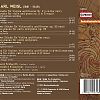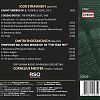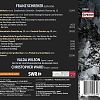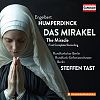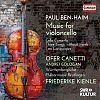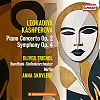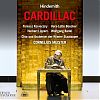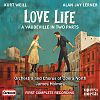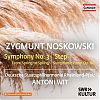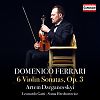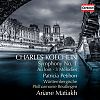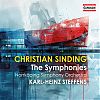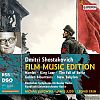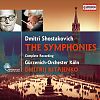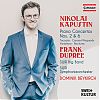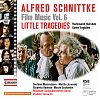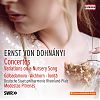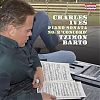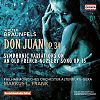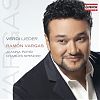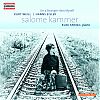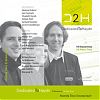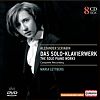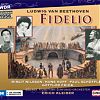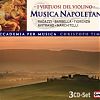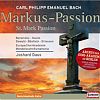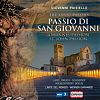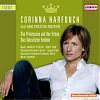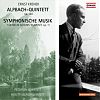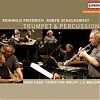cd
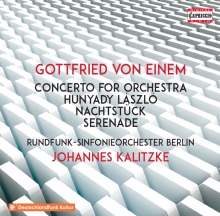
GOTTFRIED VON EINEM
RUNDFUNK-SINFONIEORCHESTER BERLIN · JOHANNES KALITZKE
Gottfried von Einem was one of those great composer personalities that played a major role in rebuilding the waste of the Austrian music scene after 1945, following the devasting cultural policies of Austrofascism, which were above all hostile to modern trends, and even more so those of the Nazis. We owe Einem not least his rescue of the note material of many works by banned colleagues from destruction. Catchy thematic and melodic ideas, sharply accentuated rhythm, strong gestural and dance-like energy and a pronounced feeling for differentiated timbres determined Gottfried von Einem’s musical diction at an early age, features he retained throughout his life.
Weitere Bilder

Karl Weigl
David Frühwirth · Benedict Kloeckner · Florian Krumpöck
Somewhere between the first and second decade of the “short” 20th century, the great Viennese musical tradition of Beethoven, Brahms, Bruckner, and Mahler supposedly crashed into the limits of tonality and came to a halt. Schoenberg, Webern, and Berg composed anew, now according to what was supposed to be the “historically inevitable” system of atonality. Karl Weigl went on to write marvelously traditional music. Schoenberg wrote in 1938 that “I always considered Dr. Weigl one of the best composers of the old school; one of those who continued the glittering Viennese tradition.” And that is what we hear in abundance in Weigl’s output throughout the genres: His symphonies , his songs , his concertos , his string quartets , and the chamber works for piano, cello, and violin in various combinations.
Weitere Bilder
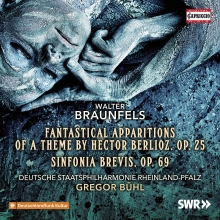
WALTER BRAUNFELS
DEUTSCHE STAATSPHILHARMONIE RHEINLAND-PFALZ · GREGOR BÜHL
Walter Braunfels is a composer whose music died twice: Once when the Nazis declared his music “degenerate art”. Then again when post-war Germany had little use for the various schools of tonal music; when the arbiters of taste considered any form of romantic music – almost the whole pre-war aesthetic – to be tainted. This 7threlease of Capriccio’s Braunfels Edition shows again his large range of colorful music and focus this time on his early great Orchestral work Fantastical Apparitions Of a Theme by Hector Berlioz, Op. 25 (1914-1917) – the first complete recording of this amazing composition, compiled with his last orchestral work, the Sinfonia brevis op. 69(1948).
Youtube
Weitere Bilder
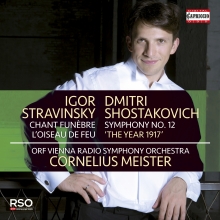
STRAVINSKY: CHANT FUNÈBRE · THE FIREBIRD / SHOSTAKOVICH: SYMPHONY NO. 12 ‘THE YEAR OF 1917’
CORNELIUS MEISTER
The both hailed from Russia, and they were contemporaries. But their biographies could hardly have been more different: Igor Stravinsky and Dmitri Shostakovich. The one was an urbane dandy, and the other an introverted melancholic. Both were deeply rooted in the music of their homeland, Stravinsky in the wealth of myths and folk customs of past centuries, and Shostakovich directly in the historical events that shook Russia to its very core and frequently gave rise to existential fears. Cornelius Meister, just awarded as "Conductor of the year" by the german classical music award Opus, knows again how to handle these different colours of sounds and shows them in an most transparent way. The ORF Vienna Radio Symphony Orchestra has been his best disposed partner for these recordings.
Weitere Bilder
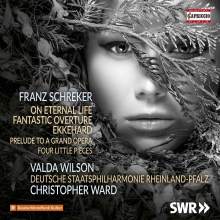
Franz Schreker
VALDA WILSON · DEUTSCHE STAATSPHILHARMONIE REIHNLAND-PFALZ · CHRISTOPHER WARD
After the ban the Nazi rabble-rousers had imposed on him, it took a long time for Schreker’s oeuvre to be re-discovered, excavated from the archives, subjected to a re-appraisal and acknowledged as an indispensable element in one of the most fascinating periods of musical history. Although being taken for granted may bear the risk of renewed negligence, Franz Schreker’s status should no longer be challenged today. This makes it possible, apart from dealing with all of his main works also to consider what he himself perhaps did not deem his most ground-breaking works, ones permitting interesting insight into a musician’s workshop and displaying cross-references to his other works like you can hear on this recording.



